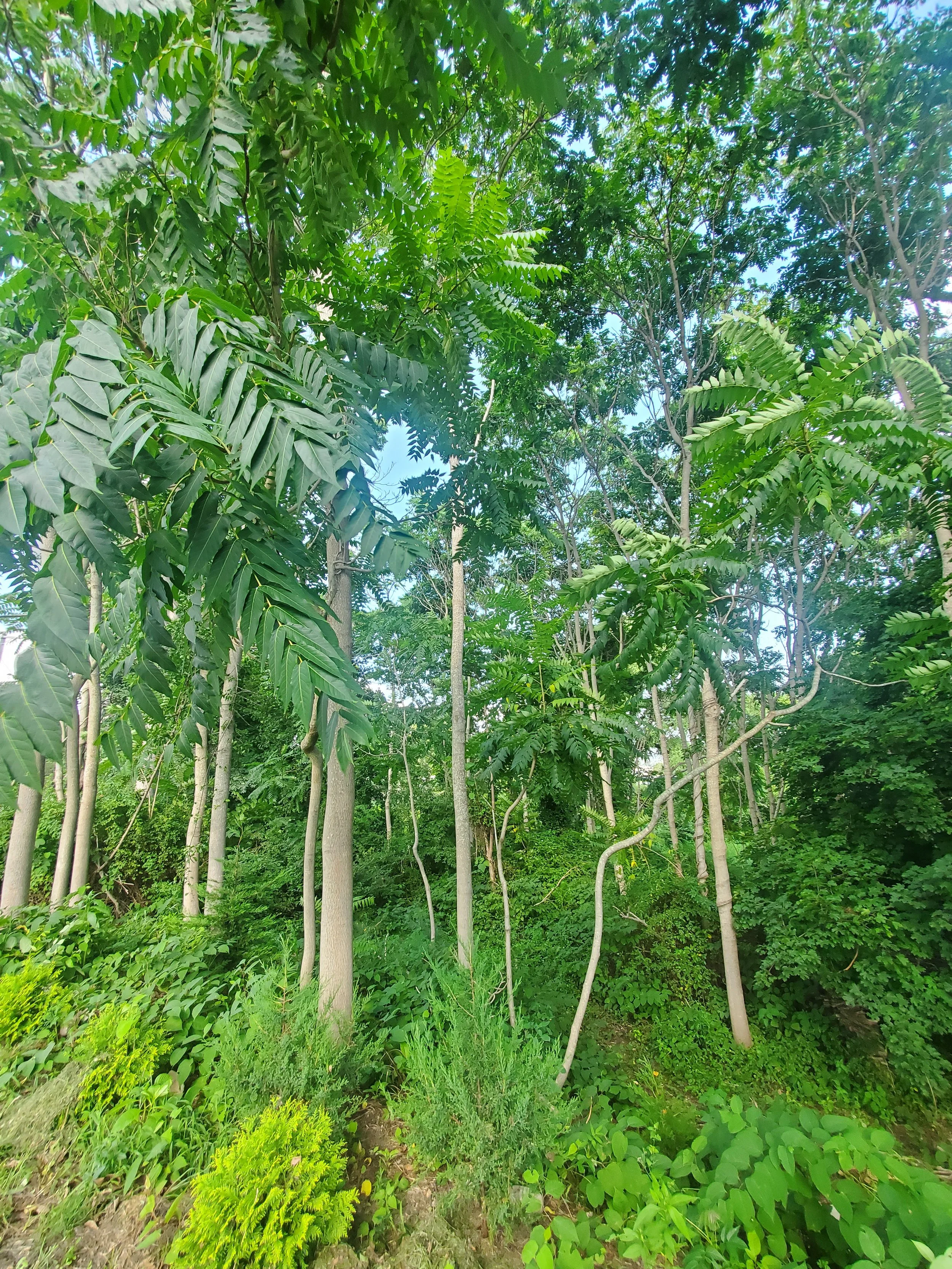West Mystic Ice Pond
LOCATION
West Mystic, Connecticut
TEAM
Cherenzia & Associates Avizinis Environmental
Mature Tree of Heaven along roadside- Summer 2023
Tree of Heaven along roadside- Winter 2024
Mature Phragmites stand along pond shoreline- Fall 2023
Mature Phragmites stand along pond shoreline- Summer 2023
This project is ongoing and includes extensive invasive species removal within the 100’ upland review area. An inland wetland permit was secured in March 2024 to begin work to restore the wetland buffer with long term goals of improving habitat value, pond ecology and landscape quality from a degraded environment to a functional native landscape.
The project site is located in West Mystic and is a former ice pond with earthen dam & spillway. The pond was built in the late 1800’s by ship captain and ice dealer, Robert Machette who also built the existing residence in 1882 and an icehouse in 1890[1]. The pond was fed by diversion of a stream from the north property boundary to the south through a canal that has since been filled in, as well as the construction of a dam along the salt marsh which is still intact. A review of historical archives indicates that the pond often had difficulty staying full year round, and at times, was ploughed and dredged during its use[2]. The Mystic Valley Water Company even provided a pipe to the pond when they serviced the Cedar Crest subdivision for use when levels were low[3]. No pipe has been found to date.
The pond property was clearcut of all vegetation prior to 1934 and outbuildings supporting the business were destroyed in the Hurricane of 1938. In December of that year, the State of Connecticut acquired property to re-align Route 215 (Noank Road). The taking included the addition of a stormwater outfall and headwall along the property line, discharging directly to the pond.[4] As a result of the stormwater runoff, the pond has become filled with silt, debris from the highway and emergent vegetation such as Phragmites, has thrived in this degraded environment. The banks around the stormwater headwall frequently erode during large storms. There is a significant number of invasive species on the slope between the road and pond, including but not limited to bittersweet, honeysuckle, multiflora rose, tree of heaven, porcelain vine and Japanese knotweed. Norway maples have grown in along the roadside. Because of the intense use as an ice pond followed by clearcutting in the early part of the 20th century, there is no existing native seed bank. The tools and removal techniques proposed consider the traits of specific species found on the site including the timing of their production of fruits and seeds. Best practice indicates that stress early in the season can help slow or prevent fruit or seed formation in invasive plants. Installing native plants in tandem with management of invasives can provide competition by Year 3.[6]
[1] Greenhalgh, Kathleen. A History of West Mystic 1600-1985. Groton Public Library, 1986
[2] "Mystic: Like the Cold." The Westerly Daily Sun, 13 December 1909, p. 5. Westerly Library & Wilcox Park, https://westerly.historyarchives.online/. Accessed 29 January 2024.
[3] “City Water for the Ponds.” The Westerly Daily Sun, 14 December 1910, p.5. Westerly Library & Wilcox Park
https://westerly.historyarchives.online/. Accessed 29 January 2024.
[4] “State of Conn/Land Acquired From Walter C Morgan, Noank West Mystic Road.” Town of Groton Land Records, 29 December 1938, V49.45. https://recordhub.cottsystems.com/Groton. Accessed 29 January 2024.
[5] Wenning, Bruce. University of Rhode Island Invasive Plant Management Workshop. University of Rhode Island. 2023.
[6] Varricchio, Emmett. Connecticut’s Invasive Plant Management Calendar. CT Invasive Species Working Group. 2016.


















